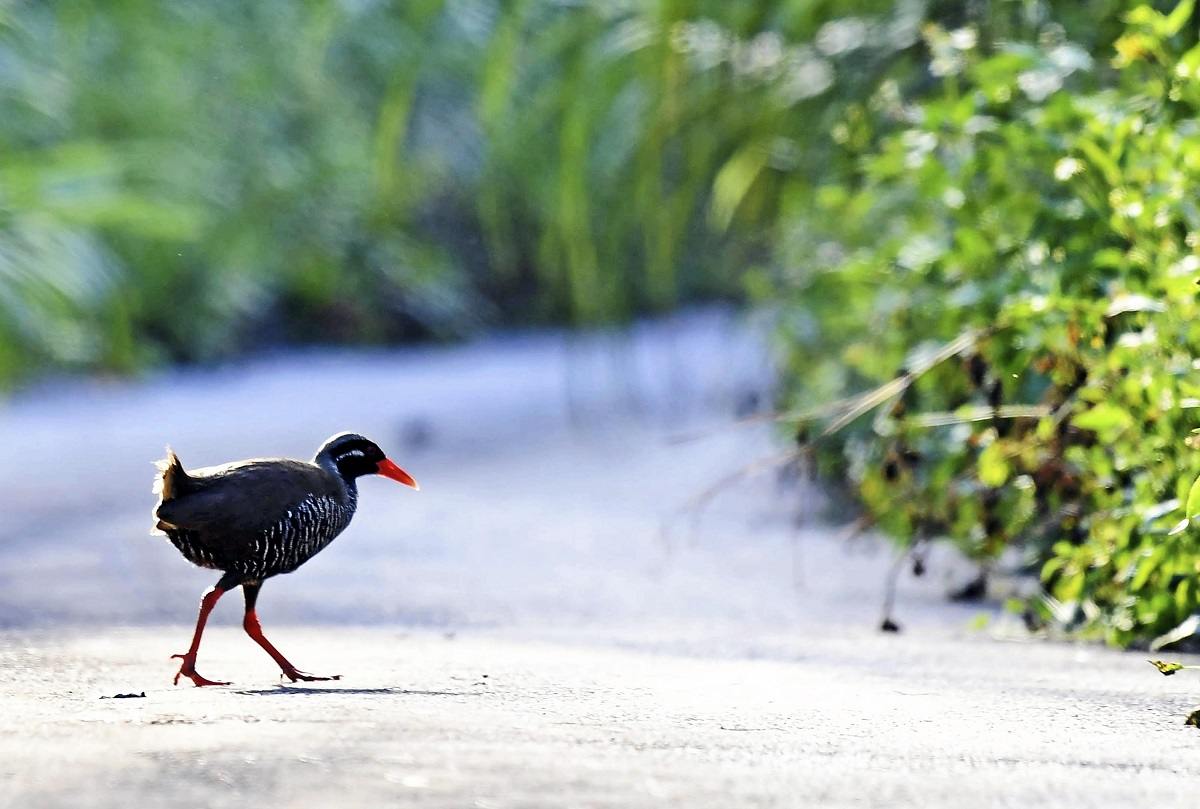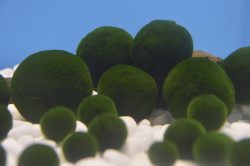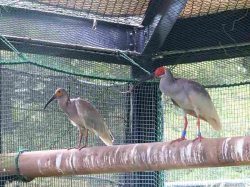Endangered Okinawa Rail Likely Being Struck by Cars While Collecting Food; Environment Ministry Steps up Efforts to Alert Drivers

An Okinawa rail seen on a road in the village of Kunigami, Okinawa Prefecture
19:00 JST, June 17, 2024
An endangered Okinawan bird is likely being killed by vehicles as it picks up the carcasses of frogs and other creatures, according to a group of researchers.
The Okinawa rail, known as Yanbarukuina in Japanese, inhabits the Yanbaru region, the northern part of Okinawa Prefecture’s main island. An experiment conducted by a team from the University of the Ryukyus found that the birds would often enter roads during their breeding season between May and July.
According to the Environment Ministry, 517 Okinawa rails were found to have been killed in traffic accidents between last year and when the research began in 1995. The ministry has stepped up efforts to alert drivers, and even though authorities have implemented measures to protect the birds, such as setting up fences, about 20 to 30 of them are still killed each year.
The Yanbaru region is registered as a World Natural Heritage site and is home to many valuable amphibians and reptiles, including indigenous species. When such creatures were killed in traffic accidents, it was thought that the carcasses were taken away by crows and other predators, but what was happening remained a mystery.
After getting permission from the ministry, Prof. Kazuki Tsuji and others from the university used chicken wings that are about the same size as the indigenous Ryukyu tip-nosed frog. The chicken was placed at nine locations overnight on a prefectural road that passes through the Yanbaru region.
By the next morning, all 54 chicken wings had vanished. Automatic cameras captured 15 of the wings being collected, and of these, two were being carried by the rail.
“The bird is known to prey on snails and insects, but it was a big surprise to see that they may also eat carcasses,” said Yusuke Maruta, a graduate student of the university who reported the results at a meeting of the Japan Ethological Society.
“It will be necessary to verify the findings using real carcasses,” said Nobuhiko Kotaka, a researcher at the Forestry and Forest Products Research Institute. “Nevertheless, it shows that roads serve as feeding grounds for wild animals.”
"Science & Nature" POPULAR ARTICLE
-

Genome Study Reveals Milestone in History of Cat Domestication
-

Big Leap in Quest to Get to Bottom of Climate Ice Mystery
-

Japan Set to Participate in EU’s R&D Framework, Aims to Boost Cooperation in Tech, Energy
-

Paws on Parade: Nairobi’s Dogs Dazzle at ‘Pawchella’
-

Japan’s H3 Rocket Failed in Latest Launch, Says Official
JN ACCESS RANKING
-

Tokyo Economic Security Forum to Hold Inaugural Meeting Amid Tense Global Environment
-

Keidanren Chairman Yoshinobu Tsutsui Visits Kashiwazaki-Kariwa Nuclear Power Plant; Inspects New Emergency Safety System
-

Imports of Rare Earths from China Facing Delays, May Be Caused by Deterioration of Japan-China Relations
-

University of Tokyo Professor Discusses Japanese Economic Security in Interview Ahead of Forum
-

Japan Pulls out of Vietnam Nuclear Project, Complicating Hanoi’s Power Plans
























